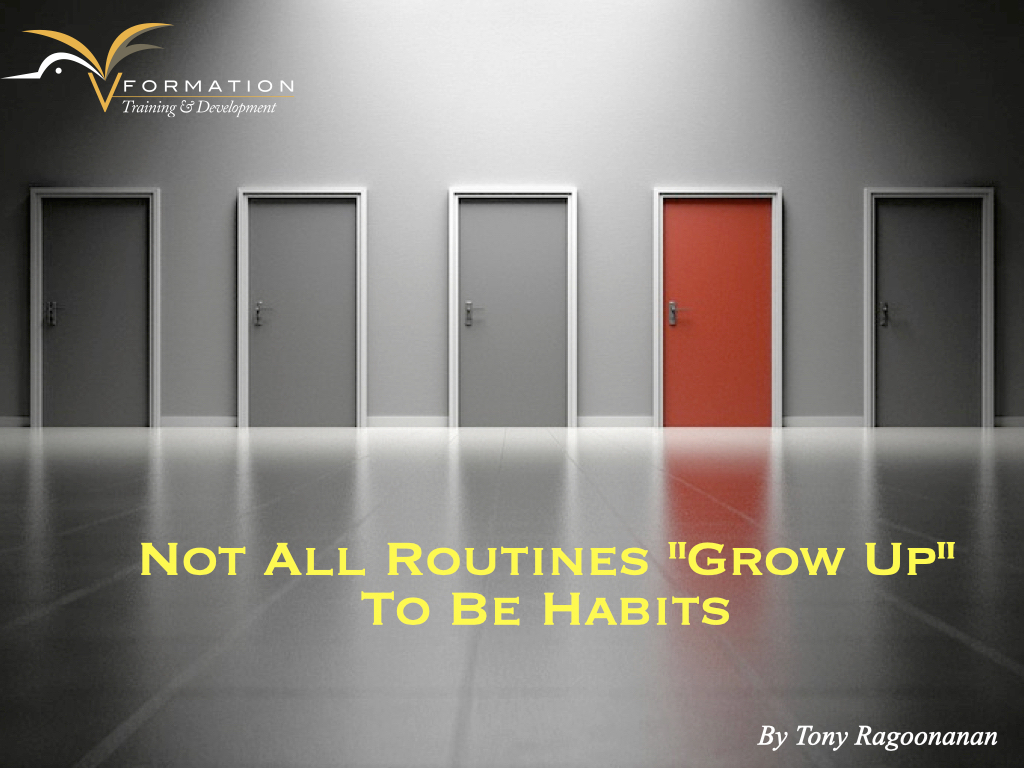
Blog
Building Community: How to Enhance the Social Ties Within Your Team
By Tony Ragoonanan
There are social experiments that I share quite frequently with teams, and the one I chose today involves the use of rats. Yes, I know it seems a bit odd but it turns out that rats don’t seem to like drugs when they’re with “friends.” This statement has a purpose, so please hear me out.
These experiments were conducted in the late 1970s by Psychologist Bruce Alexander. They were conducted to specifically study addiction and to support Dr. Alexander’s theory that the cause of addiction is far more than just about any drug.
Dr. Alexander published a series of clinical studies known as the “Rat Park Experiments”. The studies compared two groups of rats, all pre-addicted to morphine. The first group lived separately in isolated cages, and the second group lived together in a rat colony where they could play, socialize and mate.
Alexander offered both groups of rats a choice between water and a morphine solution. He found that the rats living together in the colony drank the morphine intermittently but never overdosed while those living alone in isolation did. The “social community” beat the power of drugs.
Subsequent studies have reinforced these conclusions and also found that the length of time for which rats were isolated directly correlated with the amount of morphine they chose to drink.
“In other experiments, we made the morphine solution so sweet that no rat could resist it, but we still found much less appetite for the morphine solution in the animals housed in Rat Park. Under some conditions, the rats in the cages consumed nearly 20 times as much morphine as those in Rat Park.
This fact definitely undermined the supposed proof that certain drugs irresistibly cause addiction. But what does cause addiction? Why is there currently a flood of addiction to drugs and many other habits and pursuits? People do not have to be put into cages to become addicted – but is there a sense in which people who become addicted actually feel “caged?” – Dr. Bruce Alexander.
https://www.uvic.ca/research/centres/cisur/assets/docs/iminds/phe9-rat-park-handout.pdf
The Rat Park experiments changed the narrative of addiction by showing that environmental factors were the primary cause of addiction, and therefore, fighting drug addiction should involve nurturing environments where people choose not to take addictive drugs rather than simply penalizing those who use them or deal them.
Not why the addiction but why the pain.―
As a human example: By the end of the Vietnam War, many US soldiers were addicted to opioids. However, when they returned to their hometowns where they were among their families and friends, the majority of them simply stopped their usage. Whether this was because of the absence of triggers, lack of availability of drugs, or other reasons, it seemed the change in environment made a big difference.
I want to clarify that this post is not to discuss addiction but to show the significance of the environment and explore ways to create a healthier environment in the workplace. My reason for using examples that may be a bit outside of our comfort zone is to show not only how ubiquitous the idea of community is but also how INSTINCTIVE the responding behaviours within it can become.
Psychologically, being a part of a community makes us want to do better, and be engaged, for the sake of others and ourselves.
Whether it’s within a family, a company, or some other social group, people need to be encouraged to relate and experience the support of others. The truth is that we have seen this again and again but still, so many leaders seem to ignore the importance of the organizational environment and the role that they need to play in getting it right. Motivation, engagement, and performance in the workplace depend on the environment that is being created. Therefore, it may be a good idea to consider changing or adjusting the narrative on productivity from simply getting things done to considering ways to improve what actually drives it.
The Organizational Environment
As I begin this section I will say that even though environmental factors will play a major role in human behaviour, this does not mean, that they are the only relevant factors. A person’s beliefs, values, and attitudes will play a role as well.
This supports Psychologist Kurt Lewin’s 1936 formula that B=f(PE) which states that behaviour is a function of a person in an environment. It was true when we were in the womb and it is true today. Similarly, parents create an environment in the home, teachers create an environment in the classroom, and leaders create an environment in organizations. These environments create experiences that, in turn, play a part in determining the eventual behaviours exhibited even though the formula becomes a bit more dynamic as we get older and as we (the “P” in the formula) increasingly search for authenticity and our place in the world.
Survival in any climate depends on the type of life you bring to it.
What have we observed?
Even though there are companies really working at getting things right, there are challenges that we still have to address. These issues include unrealistic expectations, insufficient resources, inequality, poor management practices, and low levels of commitment. But, these are only some of what we observe time and time again and many of us, myself included, have experienced them firsthand. One of the major reasons for this is the fact that there is a lack of clarity due to ineffective communication not only between leaders and their direct reports but within employee-employee relationships.
What are the implications of all of this? Let’s make a list:
- Workplace stress
- Poor financial results
- Higher rates of burnout.
- Greater rates of absenteeism and turnover.
- Depression and anxiety in employees.
- High company expenses
- and much more…..
The cost to companies, as well as individuals, is high and over time, the medical bills may be even higher. It’s a slippery slope if you’re not careful.
Building Community at Work
At this point, there should be no doubt as to WHY we need a sense of community in the workplace. Here are 5 actions that leaders can take to create an environment such as this:
1. DEVELOP A CULTURE OF APPRECIATION: People want to feel valued. Employees as well as teams should be recognized for achieving meaningful results as validation is also a motivator in any environment. An important point to remember is that even when giving negative feedback, it must be given in a way that lets the employee know that you are on their side. Of course, let us not forget peer-to-peer recognition since they can help employees to appreciate each other as well.
2. SUPPORT YOUR PEOPLE: Take the time to ask if employees need assistance. Many employees may not feel comfortable saying when they are unclear and this is related to the type of culture that exists. There must be a level of psychological safety or else you would be clueless as a leader as to what employees may be going through. In addition to this, have “well-being” conversations. Take the time to find out how employees are actually doing personally. Do they feel supported?
3. CLARIFY EXPECTATIONS: Responsibility for setting goals should not only lie with the leader but with their direct reports as well. Remember that the “A” in SMART goal stands for not only “achievable” but “Agreed upon.” When this is the case, clarity and accountability will increase and so will motivation. This is not just about defining the Key Performance indicators. It is also about making sure that employees understand the behaviours that drive them and how these fit into the bigger picture (how they relate to the values of the organization). Ensure that they give their input as well. Don’t underestimate the value of clarity.
4. FOSTER COMMUNICATION BETWEEN EMPLOYEES: Begin with this within group meetings. This can be challenging but create a basis for these connections by encouraging employees to engage with one another. Consider supporting knowledge sharing by providing platforms to facilitate this. Allow employees to learn from each other. Within this platform, they can also share stories about their lives, personal successes, and unique interests over which they can bond with others. Informal activities such as getting out of the office setting to do non-work-related team activities can make a huge difference in camaraderie as well.
5. GIVE EVERYONE A VOICE: Apart from obvious conversations, employee surveys are a great way to get feedback especially if they see action being taken with the data received. These can include both annual surveys as well as pulse surveys (a brief and regular set of questions sent to employees to continuously gain employees’ views on subjects such as job-related roles, communication and relationships, and the overall work environment). What can also be used are town hall meetings, and lunch and learns as these can nurture connections and help build community.
Together, these actions drive conversations that, in turn, drive PROGRESS, a strong motivator in any environment. This way, you will be ensuring that the environment feels like a supportive community.
In Conclusion
Over the last few years, a lot has been discussed about the positive impact human interaction can have on our well-being and the well-being of organizations. This further supports the idea that we all need to be part of a community and encouraged to relate so that we can experience the support of others but as we have seen, it involves making choices, and leaders have a tremendous amount of control over what, how and when it is done!!
Afterword
In case anyone may be wondering, just as I wondered years ago: Why use rats in behavioral neuroscience research?
Rats have been used in research since the middle of the 19th century, and according to information adapted from AnimalResearch.info;
“Almost all disease-linked human genes have counterparts in the rat. Pinpointing these should help researchers to develop rat genetic models of human disease.
Rats are often used to study behaviour in psychology experiments. Their brains are larger than mice, and the animals are less timid and more intelligent. Although rats do not ‘think’ like humans, some of their brain structure resembles the more primitive elements of human brains, and hence they can be used to model some human behaviours.”
 Tony Ragoonanan is the Founder of V-Formation Training & Development. As a Trainer and Performance Management Specialist, he helps individuals and organizations to align emotion, skill, and behaviour with outcomes. Outside of this, it’s all about family, football, and fitness!!
Tony Ragoonanan is the Founder of V-Formation Training & Development. As a Trainer and Performance Management Specialist, he helps individuals and organizations to align emotion, skill, and behaviour with outcomes. Outside of this, it’s all about family, football, and fitness!!
868-681-3492 | tonyr0909@gmail.com




Leave a reply